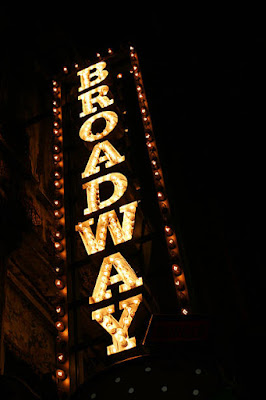In a Sundance Institute survey, the Institute has released a new study that diagnoses the state of the theater industry and imagines its future, with input from more than 75 of the field's most influential artists, leaders, donors, and administrators, as Broadway returns to business and live performances resume across the country.
“Emerging From the Cave: Reimagining Our Future in Theater and Live Performance,” released Wednesday and available on a dedicated website, gathers the thoughts, ideas, and proposed solutions from a diverse group of creatives, including Lynn Nottage, Michael R.
Jackson, Suzan-Lori Parks, Robert O'Hara, Ty Defoe, and Shaina Taub; artistic directors Maria Goyanes, Jim Nicola, and Nataki Garrett; and artistic directors Maria Goyanes, Jim Jesse Cameron Alick, a veteran dramaturg at the Public Theater who was just named assistant creative director of Off Broadway's Vineyard Theater, led the research.
On the latest edition of Stagecraft, Variety's theatrical podcast, Alick says, "But when I spoke with folks, we simply began talking about everything."
“We began talking about the rise of Black Lives Matter, the theatrical industry in general, how we pay our artists, and who should be in charge.”
Alick noticed that the same issues and themes emerged throughout his hour-long virtual one-on-one conversations with the study's 76 participants.
Alick remarked, "It really made me think, well, we're on the same page." “It was a wonderful thing to have literally dozens of individuals talking to me about the same issue and giving up comparable answers to that problem.” Discussions centered on four topics in the study's results.
One suggestion was to decentralize power hierarchies in the field in favor of shared or circular leadership systems, similar to those recently implemented at the Public Theater (where an artistic team weighs in on all creative choices) and the Wilma Theater in Philadelphia (led by a rotating group of artistic directors).
Other hot topics were holistic artist support, which entails paying artists more and keeping them in paid jobs; and what's next for digital theater, which attendees felt is likely to stay around and develop as creatives and businesses experiment with live/digital hybrid models.
“Field ideation,” or the activity of talking about large ideas, was recognized as the survey's fourth major topic by Alick.
Alick said, “Theater and live performance require a place for thinking and conversation.” “We don't have the capacity to have a good discussion right now.
Our discussions get heated. Leadership and individuals in institutions often clam up and clench their fists, indicating that they are very concerned.
In the field, there's a lot of dread and uncertainty, and we need to find out how to communicate with each other.
According to Alick, the entire report was about 150 pages long. There's a video and a presentation on the study's results on EmergingFromTheCave.com, in addition to the gathered interviews.
Sundance Institute CEO Keri Putnam stated,
"We are starting a discussion that we hope artists, funders, and organizations will continue in order to stimulate new forms of support."
“We recognize that some of these problems are beyond the scope of arts groups alone to address. In fact, we believe that many of the answers must come from sources other than institutions.”










